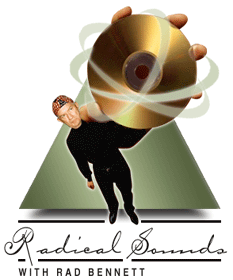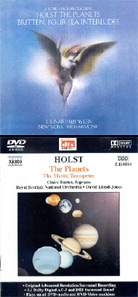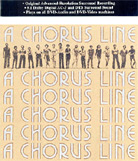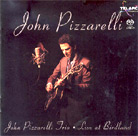 |
| July 1, 2003  Radical
Sounds: All That Jazz -- All Those Channels Radical
Sounds: All That Jazz -- All Those Channels
Since the birth of the long-playing record, back in the early ‘50s, jazz artists and enthusiasts have proven that they are just as interested in better recorded sound as classical-music players and fans. It is not very surprising, then, to find that a large percentage of advanced-resolution discs are devoted to jazz, both old and new. Though the entries are largely strong, some of the directions are alarming. Universal has entered the market with five releases from the Verve and Impulse labels, three of them classics. To Universal’s credit, all of these programs are presented as originally recorded. One of them, Ella and Louis [Verve 314 589 598], is even monaural. The two others are stereo, the famous Getz/Gilberto set [Verve 314 589 595], and John Coltrane’s spiritually inspired A Love Supreme [Impulse 314 589 596-2]. High-resolution DSD transfers reveal fresh details in all three sessions. The Getz/Gilberto, in particular, seems opened up so one can hear myriad detail. But none of these recordings is Hybrid! You have to put them in a player capable of reproducing SACD. Many may not mind, but to me it is a big debit. Universal’s two recent multichannel efforts are Hybrid, which seems very curious. They exhibit the worst and the best aspects of multichannel sound. Diana Krall’s bland vocals in The Look of Love [Verve 314 589 587] are enveloped in sound as sticky as molasses: thick, ill defined, and generally unappealing. Natalie Cole, however, gets some exhilarating surround for Ask a Woman Who Knows [Verve 314 589 915-2], her best album in many years. The large ensemble is presented up front in an arc by adroitly using rear ambiance. The result is a disc that is one of the best of its kind. Just this month, Concord Jazz entered the SACD market with five releases. The jazz giant has previously licensed material to Groove Note, and for DVD-Audio to Hi-Res Music. All of the releases that resulted from these agreements were pure two-channel. Judging from this initial offering, Concord seems bent on remixing its releases to multichannel format. The remixing works wonderfully well on Keystone 3 [SACD 1001-6], a live album by Art Blakey and the Jazz Messengers when both Wynton and Branford Marsalis were members. The players are up front, the audience around and to the back. It sounds as though this recording was originally recorded in multichannel. The other four releases, however, are disasters. Both Tania Maria’s Come With Me [SACD 1002-6] and Tito Puente’s Goza Mi Timbal [SACD 1004-6] start with strong percussion in the back, followed by sound that is directionally gimmicked to the max. Jim Hall’s All Across the City [SACD 1003-6] and Stan Getz’s Pure Getz [SACD 1000-6] are not such circus acts, but there’s still too much sound in the rears for my taste. Others will no doubt disagree. My big problem with these is that in remixing all of these discs, the front-channel presence and detail have suffered, sometimes greatly. Fortunately, the Concord discs are all Hybrid SACDs, so there are stereo tracks, and these are detailed, crisp, and warm -- probably a darned-good representation of the original recording. So, there you have it, different strokes from different companies, and nothing standard. To my mind the Hybrid SACD ought to be standard and companies should, except in rare instances, stick to the original number of channels for re-releases, saving multichannel for new recordings that are planned in that format. Now here are the three that made the eternal search for the fi worth it this month:
Holst: The Planets, The Mystic Trumpeter Repertory repetition seems inevitable as each recording company strives to release its versions of popular concert favorites, but The Planets seems a unique case of overabundance. Four multichannel versions are in release right now, with a fifth due from John Eliot Gardiner by the time you read this! The distribution, when the smoke clears, will include two DVD-As and three SACDs. The two listed here seem the best. The Naxos replaces my previous favorite, that by André Previn on EMI. It is similar in character, a reading in which conductor Lloyd-Jones guides and exhorts rather than pushes. Never, ever have I heard the noble middle section of "Jupiter, the Bringer of Jollity" played so eloquently. This is a jolly Jupiter with a thoughtful, noble bent. "Mars, the Bringer of War" is appropriately ferocious, and "Uranus, the Magician" singularly rambunctious. The recording is rich and full, with good stage depth and some awesome bass-drum thumps. There are flaws. In an effort to have the upper percussion sound less spotlit than usual, producer Andrew Walton has achieved a soundfield where cymbals and tambourine are somewhat reticent. And though all of his other multichannel recordings (so far) for Naxos have been 5.1, this one is 4.1. In spite of proclamations to the contrary on the jacket and screen, there is no center channel. But overall, the recording is a splendid achievement, with just the right amount of ambiance from the rear channels. I had expected that the wordless chorus in "Neptune, the Mystic" might wander around the room a bit, but it remains discreetly at the back of the front soundstage. Not so the chorus on the Bernstein SACD recording, which wafts through the back channels as well as the front ones. The approach is very effective, and not such a stretch, since Holst merely said the women’s voices should be offstage. The SACD is a brilliant 5.1 remix by producer Louis de la Fuente and engineer Richard King. As regular readers know, I am not generally in favor of manufacturing channels that were not originally there, but if the feat can be done with the kind of exciting expertise encountered on this disc, I can be convinced. The center channel, in particular, anchors the front soundstage in place without ever making the left or right channels sound compartmentalized. The organ-pedal notes mixed to the LFE channel are rock solid, and the chimes in "Saturn, the Bringer of Old Age" are harsh and metallic as Holst intended (Lloyd-Jones’ are not). Bernstein’s performance is more forced and emotional than most British ones, but he gets away with it through sheer conviction of purpose. SACD campers get the best bonus: Bernstein’s robust and vibrant readings of the four interludes from Benjamin Britten’s Peter Grimes. In spite of spot-on singing by soprano Claire Rutter and brilliant poetry by Walt Whitman, the filler on the DVD-A is really a lesser work, pleasant enough, but scarcely significant. Two technical footnotes: The Sony disc is not Hybrid. It will only play on SACD-equipped players. The Naxos DVD-A contains no stereo mix, just the three multichannel ones.
This popular show recording sounded so good in the multichannel format that I asked Sony if it might have been made from an original SQ quad master. The answer was "no," which makes the achievement of reissue producers Didier C. Deutsch and Richard King all the more impressive. Surround is used with imagination. The show opens with a dance master auditioning dancers for a chorus line. The dancers are up front, but the taskmaster is in the back, so in a sense, the listener feels like he or she is doing the auditioning. After that, things gravitate pretty much back to the front, with lots of ambiance to the back, until the final reprise of "One," when the sound comes from all over the place, totally involving the listener in what has gone before. It is quite a thrilling experience. All the sounds are advanced resolution, too; the voices have much more presence and punch than on the CD. Oddly enough, the SACD two-channel mix is a bust, with balances that seem way off. If Broadway can sound this good in an SACD release, I say "encore!" I would suggest continuing with Bye, Bye Birdie and A Little Night Music. But please, Sony, do them on Hybrid discs. A Chorus Line is strictly SACD and will not play on regular CD players.
This concert was fashioned to celebrate the 10th anniversary of the John Pizzarelli Trio: John Pizzarelli, guitar and vocals; Ray Kennedy, piano; and Martin Pizzarelli, bass. The ensemble plays in a relaxed style that is impossible not to like. The recording includes Pizzarelli’s banter to the audience, so playing this disc is much like being at a real concert, except for one thing: this is really a polite crowd. Listen to Chesky’s Bucky Pizzarelli for comparison. In that recording (available on both SACD and DVD-A), the audience is always noticeable in the surrounds, talking and making distracting sounds. Either Telarc used its microphones to cut out the crowd or they asked the people to remain quiet. Unlike David Chesky, the Telarc producers and engineers use the center channel for this realistic-sounding session. Pizzarelli’s vocals are anchored there, with the instruments, his own guitar included, heard in all three front speakers. The surrounds carry a lot of the audience sound as well as the club’s reverb. The result is very satisfying, and a good example of how the center channel can be used to increase clarity without causing any feeling of compartmentalization or isolation. ...Rad Bennett
Ultra Audio is part of the SoundStage! Network. |
 Holst: The Planets; Britten:
Four Sea Interludes (from Peter Grimes)
Holst: The Planets; Britten:
Four Sea Interludes (from Peter Grimes) Hammlisch: A Chorus Line
Hammlisch: A Chorus Line John Pizzarelli: The John
Pizzarelli Trio -- Live at Birdland
John Pizzarelli: The John
Pizzarelli Trio -- Live at Birdland